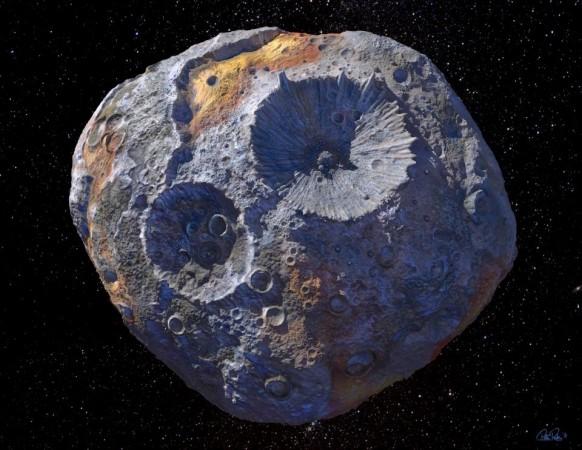
In the Asteroid Belt between Mars and Jupiter lies a metal asteroid that has $700 quintillion worth of gold, iron and nickel, Daily Star Online reported. This translates to $100 billion for every person from Earth's 7 billion population.
Now there is a plan to mine asteroids, and the project is said to kick off within the next decade, the publication reported. Asteroid mining private company Deep Space Industries (DSI), which is located in NASA's business park in California, will lead the project with the aim of extracting resources and supplying it to Earth.
Earlier, NASA's Dawn, Japan Aerospace Exploration Agency's (JAXA) and even European Space Agency's (ESA) Rosetta carried out successful missions and brought back resources from rich asteroids and comets, but the governments funded these missions.
With tech innovations, the private mining company is planning to change the way how these types of missions take place. For the first time in the history, asteroid mining may be economically possible with the help of DSI's pioneering spacecraft.
This mission will begin with the launch of tiny "Prospector" scouts to locate space resources, the publication reported. After the best locations have been found, specialized robotic spacecraft will be sent to extract the resources.
John Zarnecki, professor of Space Sciences at the Open University and Royal Astronomical Society President, said that space mining has become reality now.
"The timeline for space mining is the $64,000 question. My opinion is probably 25 years for a 'proof of concept' set-up, and 50 years for a commercial start. But there are so many uncertainties – mostly based around economics and the progress of space technology," he told Daily Star Online.
"At the moment, the economics are totally against it. But what happens as certain materials start to run out and the price goes up by a factor of 10? From a scientific perspective – where I come from – we shall be bringing back material from an asteroid in the next decade – perhaps kilograms.
"In fact, the Japanese have already brought back a few grams so you could say asteroid mining has already started! Rare Earth elements are the most likely to be exploited first. These are materials which are critical to various areas of microelectronics and mobile phones."
DSI's lawyer Sagi Kfir said that private mining companies can legally exploit space resources.
"In November 2015, a historic step was taken toward opening up the reaches of the solar system and beyond for humanity when President Obama signed the Commercial Space Launch Competitiveness Act," he said, according to the publication.
"Under Title IV of the law, and for the first time in history, US citizens including commercial entities are now entitled the explicit right to own resources extracted from space, such as water ice from asteroids.
"These rights, in accordance with international law and treaties, were set to encourage the development of a space resource industry that will take the necessary risks to find, extract, and use space resources in the larger effort of developing a space economy and infrastructure as humanity expands its reach into the solar system."
IBT India reached out to DSI via email for its comment. DSI replied: "Thank you for your interest in DSI. Unfortunately, our engineering and science teams are unavailable for interviews."
Asteroid 16 Psyche is a mysterious "metal world" that is valued at $10,000 quadrillion. Space miners have set their eye on the asteroid and NASA is also planning Discovery Mission that is expected to launch in the summer of 2022.
"We challenged the mission design team to explore if an earlier launch date could provide a more efficient trajectory to the asteroid Psyche, and they came through in a big way," Jim Green, director of the Planetary Science Division at NASA Headquarters in Washington, said in May 2017. "This will enable us to fulfill our science objectives sooner and at a reduced cost."

















